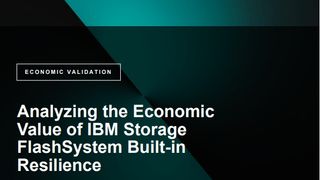IT decision makers fail to implement proactive security strategies
A lack of support from board members is a major hurdle

Two-thirds of IT decision makers say their business has implemented a reactive security programme rather than a proactive process because they can't keep up with changing threats, legislation and other external factors that make it harder to plan for risks.
According to Optiv Security, IT decision makers are finding it increasingly hard to stay on top of the rapidly changing threat landscape, as well as having to deal with resistant board members that don't see the value of having a robust cyber-security strategy.
Respondents in Optiv Security's research said they thought mobile applications have had a significant impact on 79% of businesses, while the cloud has also changed the way businesses must deal with the security infrastructure. 77% of people questioned said migrating to the cloud has had a "major" or "significant" impact on cybersecurity strategy.
"Security teams that focus purely on the external threat are being left behind by the pace of business and digital change," said Simon Church, Optiv's general manager and executive vice president for Europe.
Getting buy-in from the business is causing a big shift in cybersecurity strategy, Optiv Security's report highlighted. Almost 60% think it's hard to get support from the board because of a lack of understanding from other stakeholders, while less than a quarter believe the business understands their strategy.
"We are seeing a significant shift to a business-first' perspective among cyber leaders, which balances risk with the imperatives of the modern enterprise," Church added.
"However, many organisations are still married to the antiquated outside-in model, which is predicated on buying security technologies based on the latest trends and vulnerabilities in a problem and response manner.
Get the ITPro. daily newsletter
Receive our latest news, industry updates, featured resources and more. Sign up today to receive our FREE report on AI cyber crime & security - newly updated for 2024.
"This approach allows the landscape, rather than enterprise objectives, to dictate security infrastructure and operations, and often ignores the other important elements of a successful security programme - people and process."

Clare is the founder of Blue Cactus Digital, a digital marketing company that helps ethical and sustainability-focused businesses grow their customer base.
Prior to becoming a marketer, Clare was a journalist, working at a range of mobile device-focused outlets including Know Your Mobile before moving into freelance life.
As a freelance writer, she drew on her expertise in mobility to write features and guides for ITPro, as well as regularly writing news stories on a wide range of topics.




